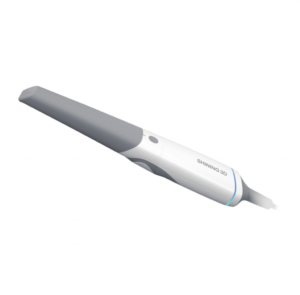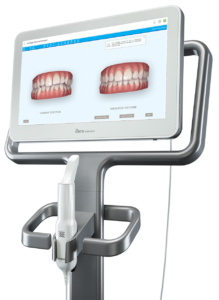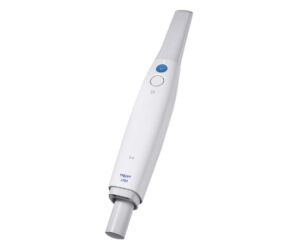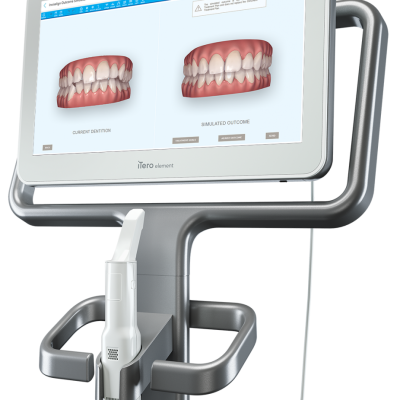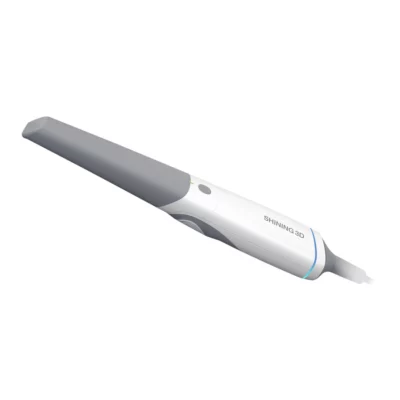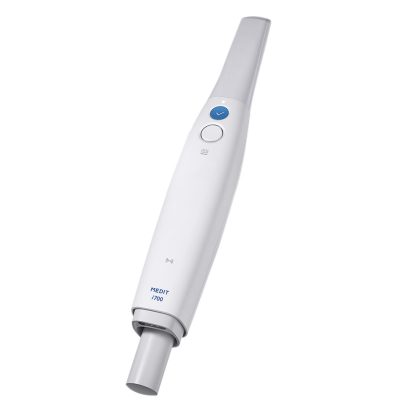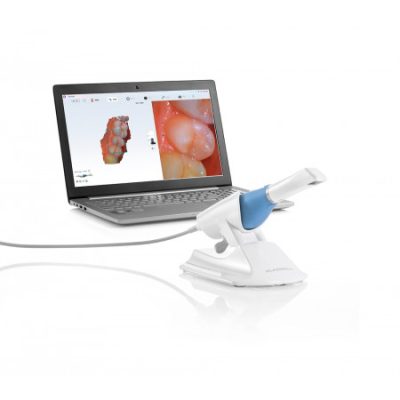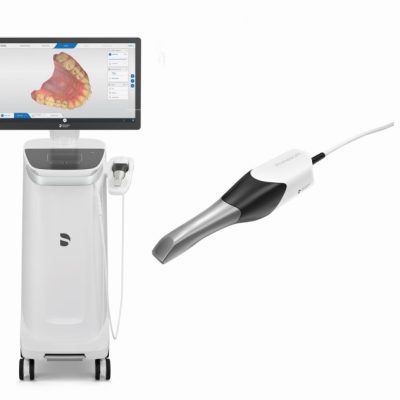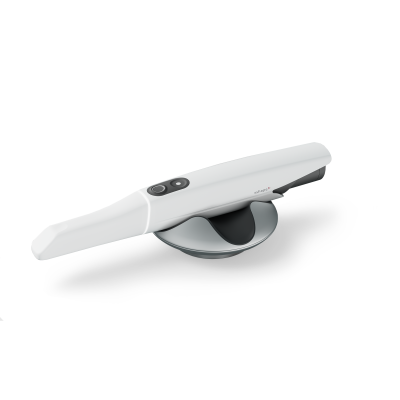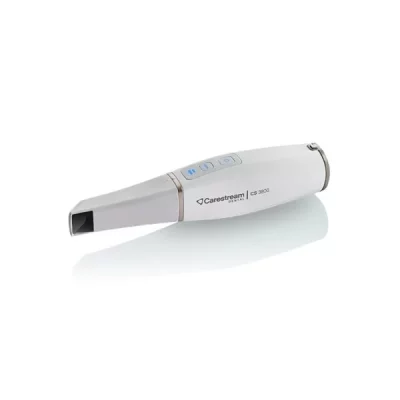- Last Updated: January 12, 2024
-
 Pat Nathaniel
Pat Nathaniel
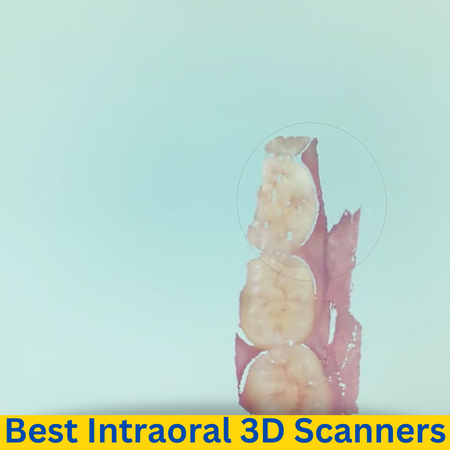 Nobody likes making dental impressions. That’s why your dental practice needs an intraoral scanner.
Nobody likes making dental impressions. That’s why your dental practice needs an intraoral scanner.
Intraoral 3D scanners let you get more accurate impressions much faster and cheaper than normal methods. Meanwhile, your patients will love not having to chomp down on yucky alginate putty.
But these scanners can be expensive. You must consider your priorities carefully to avoid wasting your investment on a scanner that can’t satisfy you or your patients.
Read on to find out which intraoral 3D scanner you want for your practice.
Top 7 Intraoral Dental 3D Scanners in 2024
1. iTero Element 2 (Best Choice)
2. Shining 3D Aoralscan 3 (Best Value)
3. Medit i700 Wireless (Premium Choice)
4. Planmeca Emerald S (Fastest Scans)
5. Dentsply Sirona CEREC Primescan (Very Easy to Disinfect)
6. 3Shape TRIOS 5 (Best Usability)
7. Carestream CS 3800 (Most Ergonomic)
Technology: Laser pulse | Wand Weight: 470 g | Wand Dimensions: 338.5 x 53.5 x 69.8 mm
Many intraoral scanners boast about filling everybody’s needs. But iTero Element 2 does the impossible — it provides a complete package that serves both new and seasoned users.
If the original Element scanner was fast, Element 2 is even faster. This intraoral scanner can complete a full arch scan in only 60 seconds.
That means you can work faster and see more patients while offering them more comfortable service.
Element 2’s wand is admittedly on the heavier side. But thanks to the fast scan speed, you won’t tire your arm.
The scanner also creates accurate full-color digital impressions, thanks to seamless integration with iTero’s Invisalign software. You can use third-party programs as well, but the iTero software gives the best results.
Additionally, the system comes with a dedicated monitor and stand. You won’t have to spend money on a separate laptop. That’s especially welcome as Element 2 is rather pricey.
But it’s worth the investment. The iTero Element 2 is an intraoral scanner that will serve you for years.
Pros
- Fast scan speed
- Accurate scans
- Integrated monitor and control unit
- Dedicated software
Cons
- Bulky wand
- Pricey
Technology: Structured light | Wand Weight: 240 g | Wand Dimensions: 281 mm × 33 mm × 46 mm
Affordable quality? Now that’s just a pipe dream. That’s what you’d think until you see the great value proposition from the Shining 3D Aoralscan 3.
This intraoral scanner is very affordably priced. But you don’t have to compromise performance for a low price.
Aoralscan 3 is lightning fast, with full arch scans taking about a minute — and experienced users may be able to cut that in half. Your patients will be asking you, “It’s done already?”
In software, Aoralscan 3 punches above its weight. The software is simply better and faster than that of much more expensive scanners. It also has a great AI feature that eliminates unnecessary soft tissue data.
Speaking of weight, Aoralscan 3 is a light slim device. You can use it comfortably for a long time — not that you have to.
The scanner doesn’t come with a control unit, though, so you need to buy a laptop. The scan detail is also average.
Nonetheless, Shining 3D Aoralscan 3 does a fantastic job for its price.
Pros
- Fast scanning
- Lightweight
- Great software
- Affordable
- Two scanner tip sizes
Cons
- Mediocre detail
- Needs a laptop
- Doesn’t work off USB power
Technology: Structured light | Wand Weight: 328 g | Wand Dimensions: 313 x 44 x 47.4 mm
Do you want the best — both for yourself and your patients? Medit i700 Wireless is a premium digital dentistry solution for demanding practitioners.
As its name implies, the i700 Wireless is… Well, wireless. You can angle the scanner freely without a cable to provide a comfortable scan.
You won’t have to worry about battery life, either. Each of the three batteries included lasts for an hour. You can connect the scanner to a charging cable, as well.
Not that you need an hour for great results. The i700 wireless produces high-accuracy scans at fast speeds. It’s not quite as fast as iTero Element 2, but full scans still take less than two minutes.
The 3D in-motion video technology produces bright, vivid full-color scans — with some effort. Getting the best quality requires some practice.
The premium features of i700 Wireless also come at a premium price. But if you want the best of the best, this is your intraoral scanner.
Pros
- Wireless scanner
- Good battery life
- Accurate full-color scans
- Self-disinfecting
- Light despite having a battery
Cons
- Expensive
- Needs a laptop
- Difficult to use
Technology: Laser triangulation | Wand Weight: 229 g | Wand Dimensions: 249 x 41 x 45 mm
In digital dentistry, faster treatment benefits both dentists and patients. You can see more patients during the day, while they can enjoy the fast and comfortable treatment.
Planmeca Emerald S is the speed demon busy dentists need.
This intraoral scanner reaches an extreme scanning speed. Doing a full arch scan in less than a minute, it’s one of the fastest intraoral scanners on the market — if not the fastest.
Emerald S is also highly accurate. Its RGB laser technology produces lifelike, full-color scans that let you see exactly what’s happening in the patient’s mouth.
Emerald S is very slim and light and even comes in multiple colors. Just in case you want your intraoral scanner to match your practice’s branding.
The scanner is tricky to use though and requires you to follow a precise scanning protocol. Otherwise, it may struggle to build the scan properly.
But if you’re willing to learn, Planmeca Emerald S is the fastest intraoral scanner you’ll find.
Pros
- Very fast scanning speed
- High accuracy
- Light and slim
- Two tip sizes
Cons
- High learning curve
- Expensive
- Needs a laptop
Technology: N/A | Wand Weight: 524 g | Wand Dimensions: 253 x 50.9 x 58.8 mm
You must thoroughly disinfect and sterilize the intraoral scanner’s tip between each patient. This can be a time-consuming task — unless your work partner is Dentsply Sirona CEREC Primescan.
CEREC Primescan comes with three interchangeable hygienic sleeves. One is a stainless steel sleeve with a sapphire glass window that you can disinfect with a simple wipe.
The steel sleeve with a disposable window is good for autoclave sterilization. Finally, you can simply throw away the disposable plastic sleeve option.
Whatever kind of quick disinfecting you need, CEREC Primescan provides it.
The scanner is very fast, rivaling even Planmeca Emerald S, and is highly accurate. You’ll need that speed because the CEREC Primescan has the heaviest, biggest wand out of any machine on this list.
You can choose between a laptop version or a scanner with a dedicated control unit. Pick the option that suits you the best — just be prepared for a big investment.
Should you have the money and muscles, though, Dentsply Sirona CEREC Primescan makes providing hygienic scans a breeze.
Pros
- Multiple hygienic sleeves
- Control unit and laptop versions available
- Fast scanning
- Simple usability
Cons
- Huge wand
- Very expensive
- Requires subscription
Technology: Structured light | Wand Weight: 299 g | Wand Dimensions: 266 x 37 x 38 mm
Taking fast and comfortable digital impressions isn’t always just about scanning speed. 3Shape TRIOS 5 offers an overall smooth and easy work experience.
Like the Medit i700 Wireless, the TRIOS 5 is a wireless scanner. With no cables and light construction, you can easily angle and orient it to get accurate results without inconveniencing your patients.
You can scan up to 33 patients with one charge, so there’s no need to constantly worry about the battery level.
The scanner’s calibration-free design combines with 3Shape’s ScanAssist software to eliminate unnecessary data and build the 3D model as you scan. The result? Accurate, high-resolution scans.
TRIOS 5 also comes with a detachable autoclavable tip and thin body sheets for easy disinfecting and cleaning. Just scan, swap the sleeve, and repeat — simple as that.
You’ll never really own your device, though. TRIOS 5 is available only through a subscription service, which can rack up the price over time.
That said, the simple and fast usability just may be worth it.
Pros
- Smooth workflow
- Wireless
- Good software
- Easy to clean
Cons
- Subscription model
- Pricey
Technology: Structured light | Wand Weight: 240 g | Wand Dimensions: 226 x 38 x 60 mm
Your hand and arm can get tired if you have to scan multiple patients’ mouths every day. Carestream CS 3800 keeps you going with an excellent ergonomic design.
The CS 3800 is the most compact device in this intraoral scanner comparison with the shortest wand out of all listed scanners. It’s also very light, and although the battery housing is a bit thick, it doesn’t get cumbersome.
Oh yes, a battery housing. This is a wireless scanner so you can manipulate it without getting tangled in a cable. Unless, of course, you decide to use the accompanying backup power cable.
CS 3800 scans fast, completing a full arch in roughly a minute. It captures images in HD quality and integrates with Carestream and third-party software for easy data sharing.
The scanner comes with three swappable tips. Your patients can enjoy a comfortable scan, no matter what their chompers are.
All in all, Carestream CS 3800 is a great lightweight and efficient intraoral scanner.
Pros
- Ergonomic design
- Light and slim
- Fast and accurate
- Wireless
- Three swappable tips
Cons
- Needs a laptop
- So-so battery life
- Pricey
Intraoral Scanners — A Revolutionary Dental Tool
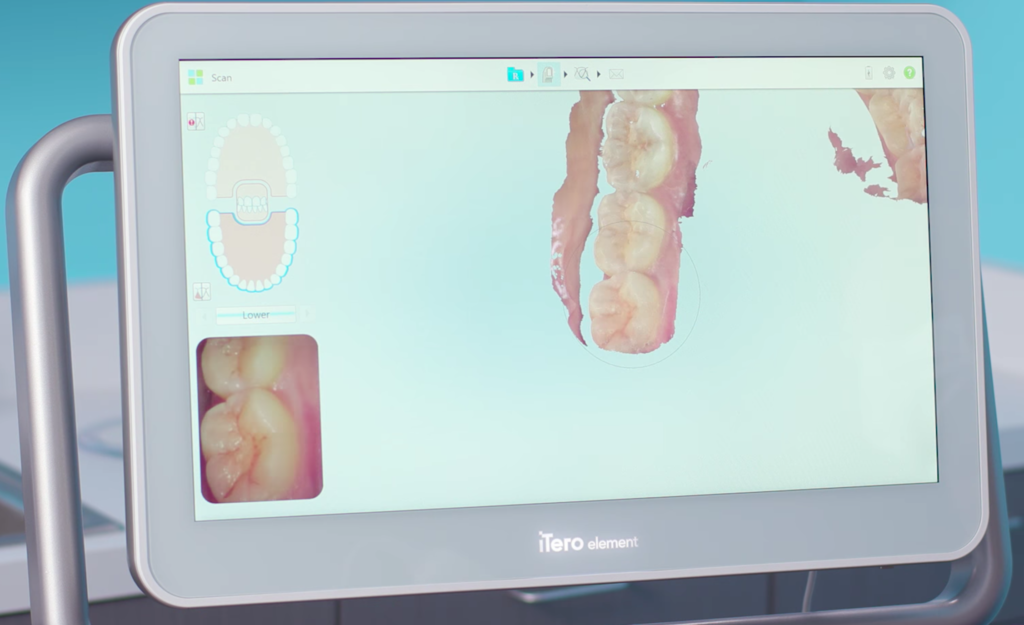
Intraoral scanners have revolutionized dentistry. We’re not exaggerating when saying that. It’s hard to find a downside to these devices.
Taking dental impressions with a tray and alginate putty is an unpleasant and slow experience for everybody — dentist and patient alike. Traditional impressions are also prone to flaws and errors.
Intraoral scans resolve all these issues. But how do these scanners work? And even more importantly, are they safe to use?
Let’s take a closer look at what makes intraoral scanners tick.
What Is an Intraoral 3D Scanner?
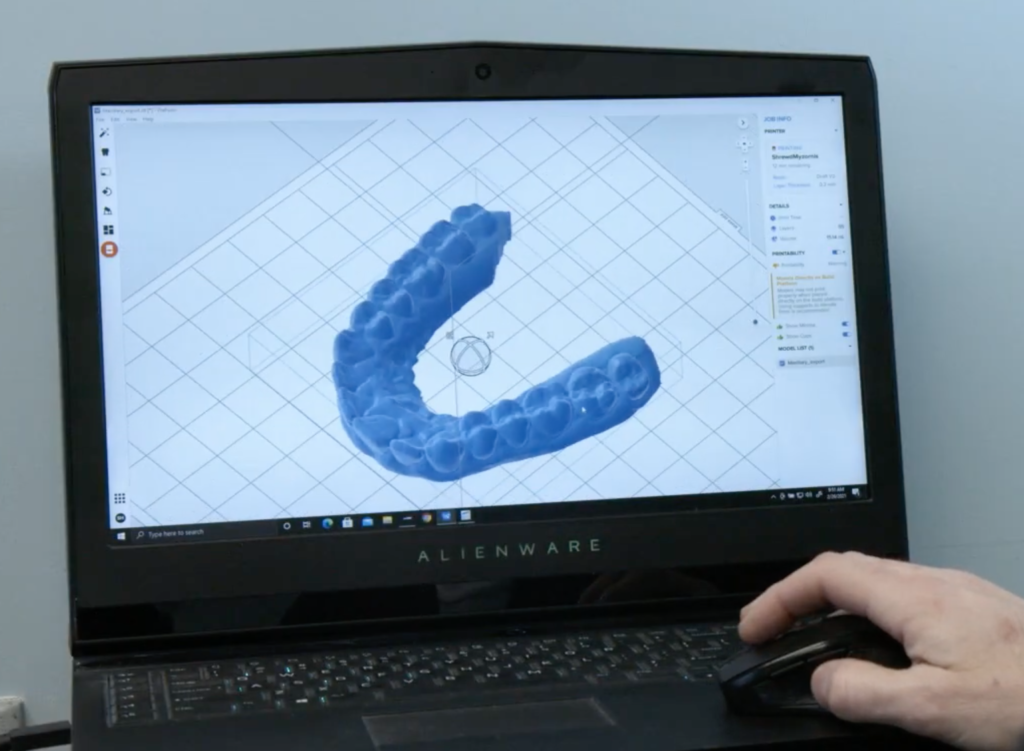
An intraoral scanner is a lightweight, compact 3D scanner. Their generic form factor is a slim wand you’ll insert into a patient’s mouth.
At the tip of the wand is the scanner head, usually consisting of a light source and sensors. The scanner captures the details of the patient’s teeth and jaws and generates a 3D model from the scan data.
Finally, the wand transmits the 3D model to a computer. You can then freely view the model and edit it with CAD software.
Intraoral 3D scanners typically use one of three technologies to produce a scan:
- Structured light scanners project a specific light pattern using LED lights. The scanners’ sensors calculate the 3D shape based on distortions in the reflected light.
- Laser triangulation scanners do essentially the same thing, but use lasers instead of LEDs. They can be slightly faster and more accurate than structured light scanners.
- Laser pulse scanners send out dozens of short laser beams and measure how long they take to reflect. Since the scanner knows the speed of light precisely, it can generate an accurate 3D image based on the time the laser beam took to return.
Check out our articles on the cheapest 3D scanners and best DIY 3D scanners for even more scanners.
How Long Does an Intraoral 3D Scan Take?
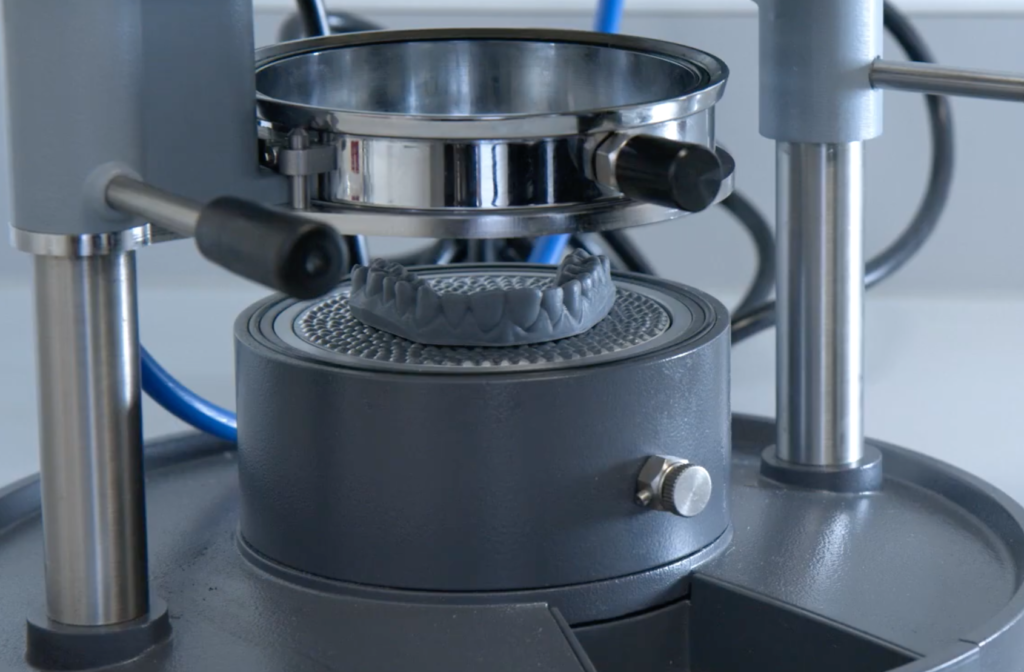
Possibly the greatest advantage of intraoral scanners is speed. They’re much faster than traditional dental impression methods.
On average, dental 3D scanners can scan a full arch in about a minute. Some intraoral scanners are even faster.
Compare that to the roughly 15 minutes it takes to make an impression with alginate. There’s no competition — the intraoral scanner wins.
Is Intraoral 3D Scanning Safe?

You might be concerned about whether using an intraoral scanner is safe. Maybe you’re even concerned that they could irradiate you, your staff, and your patients.
Since they depend on light, there’s simply no radiation to worry about. The bright lights could theoretically harm the eye, but if you’re using the scanners as intended, the light will never be pointed at anyone’s eyes.
So, in a nutshell — intraoral scanning is perfectly safe.
Benefits of Using Intraoral 3D Scanners
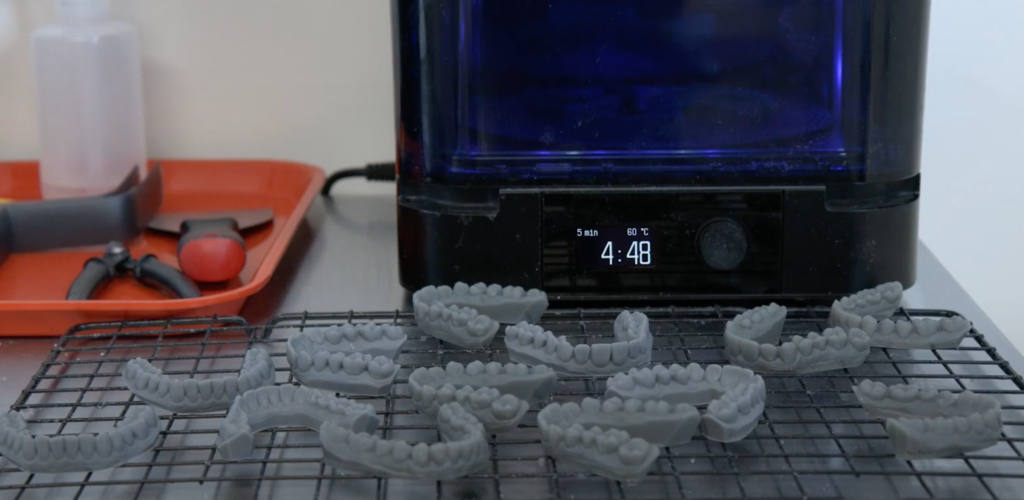
But why should you invest in a dental 3D scanner if putty has always served you well? The best intraoral scanners offer a whole slew of benefits to dentists and patients, including:
- Better Productivity: Their superior speed allows you to treat patients faster. As a result, you can see more patients during the day and they won’t have to wait for their results.
- Higher Accuracy: Intraoral scanners are more accurate than alginate impressions could ever be. The higher accuracy translates directly into more effective and comfortable appliances for your patients.
- Improved Patient Comfort: Nobody ever wants to bite down on a dental mold. Intraoral scanners take only a moment to produce accurate full scans, keeping your patients comfortable.
- Better Communication: You can use the accurate 3D model to show your patients exactly what you’re dealing with. When they see their teeth for themselves, patients are more likely to agree to treatments.
- Cost Savings: Intraoral scanners can be pricey, but their operating costs are very low. You don’t have to buy extra putty or new trays.
- Dental 3D Printing: You can use the scanned 3D model to create appliances digitally and print them using a dental 3D printer. Say goodbye to the costs and waiting times of outsourcing appliance production.
Start Giving Better Dental Care
Having an intraoral scanner at your practice enables you to provide your patients with better, faster, and cheaper care. These devices are the future of dentistry, and that future is here today.
Any intraoral scanner on this list will serve you well. But if you’d like more specific recommendations, here are our top choices:
- For the best combination of everything, choose iTero Element 2.
- Shining 3D Aoralscan 3 is a fantastic budget choice.
- Planmeca Emerald S scans at breakneck speed.
- Carestream CS 3800 provides the most comfortable scan for you and your patient.




